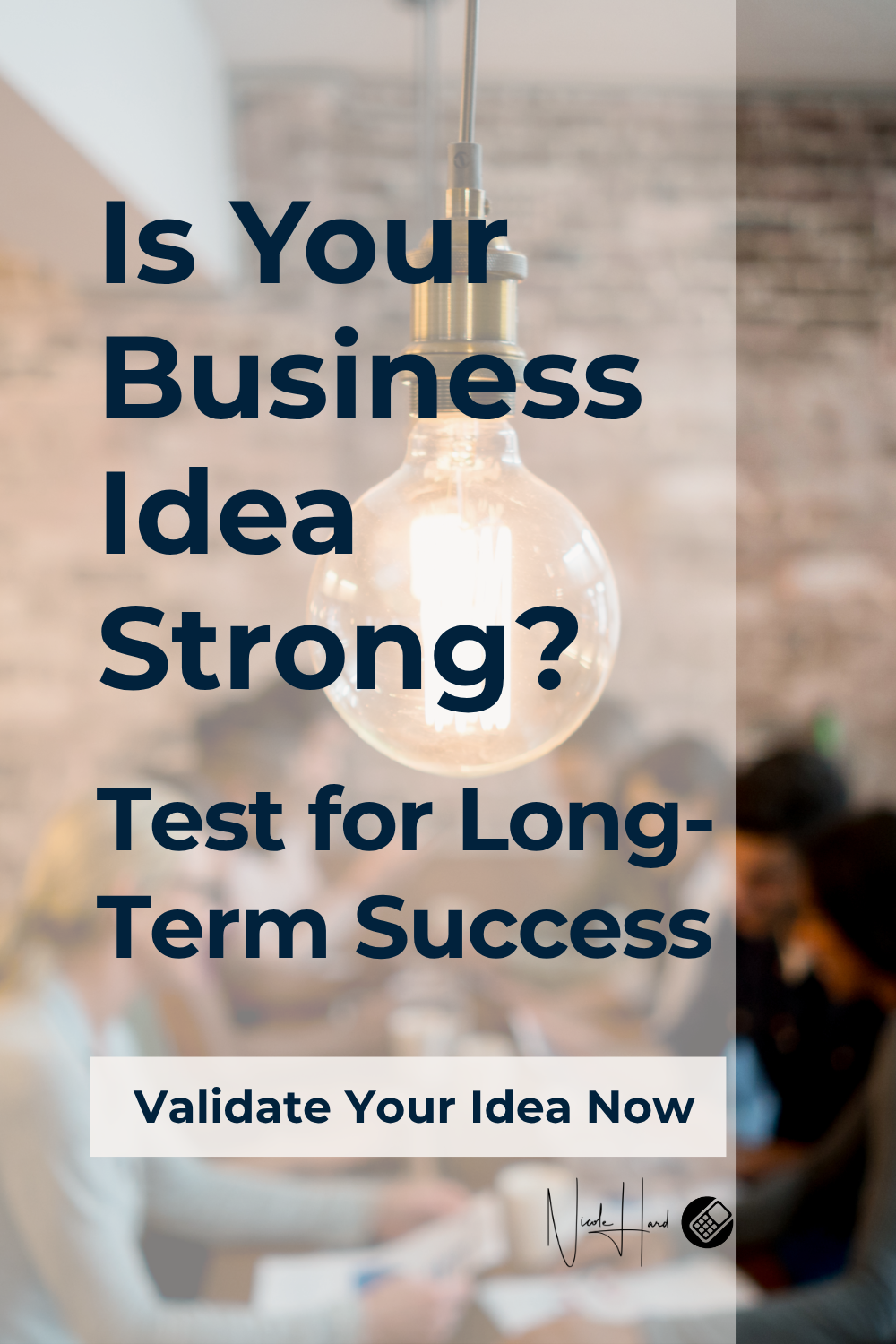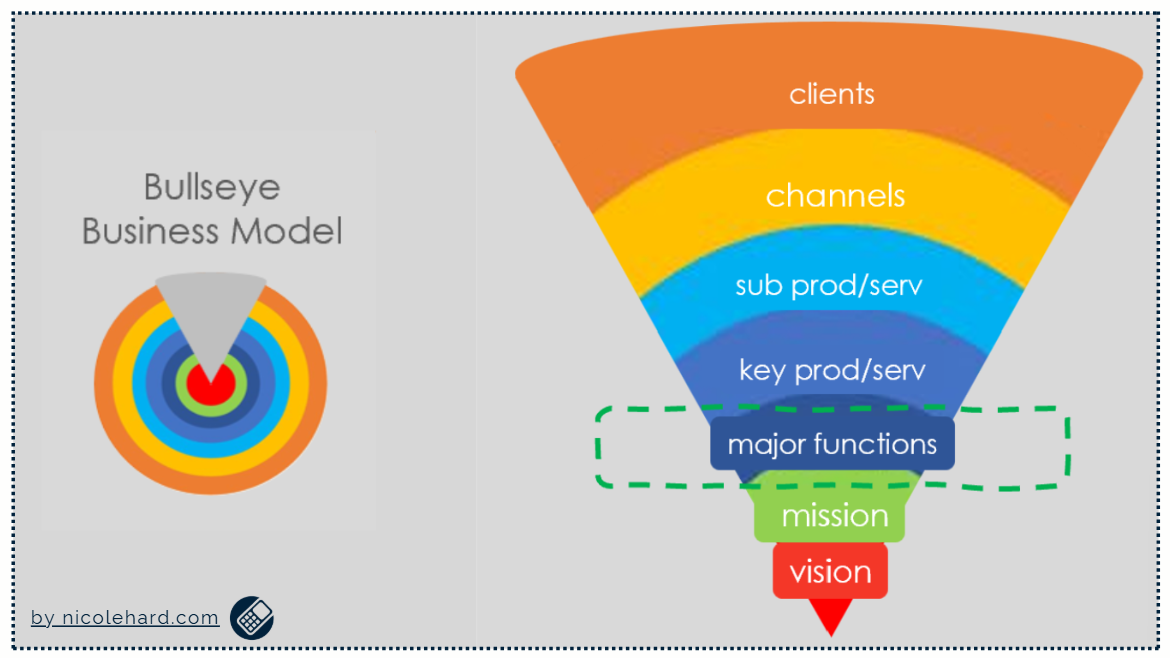Is Your Business Idea Built to Last? Testing for Strategic Strength
Beyond passion: Learn how to evaluate your top business ideas for long-term viability, scalability, and lasting impact.
The Strategic Advantage: Laying the Foundation for Enduring Success
Welcome back! In our previous guide, "Unearthing Your Winning Business Idea," you took the crucial first steps in brainstorming and identifying your most promising ideas.
Now, it's time to put those top ideas to the test. Not all ideas are created equal when it comes to long-term success. A truly strategic business idea possesses the inherent qualities for growth, adaptability, and lasting value.
This guide will walk you through a simple yet powerful framework to assess the strategic potential of your chosen (and even your other) business ideas, helping you make informed decisions about where to focus your energy for maximum impact and longevity.
Understanding Strategic Potential: Why It Matters
Testing the strategic nature of your business idea early on provides significant advantages, enabling you to:
Build a Foundation for Long-Term Growth: A strategic idea has the inherent capacity to evolve and remain relevant over time, setting you up for sustained success.
Maximize Your Business's Future Value: Businesses built on strategic foundations are often more attractive for future expansion, investment, or even acquisition.
Unlock Scalability and Diversification: Strategic ideas often have natural pathways for expanding product lines, services, and reaching new markets.
Clearly Define Your Core Offering: Understanding the strategic positioning helps you articulate precisely what your business is, what it offers, and who it serves, attracting the right customers.
Introducing the Bullseye Model: A Visual Test for Strategic Fit
To visually assess the strategic strength of your business ideas, we'll use a simple tool called the "Bullseye Model." Imagine a target with several concentric rings.
The center represents the core of your business – its fundamental offering. The outer rings represent supporting elements.
By plotting your ideas onto this model, you can quickly gain a high-level understanding of their strategic potential.
DEFINING THE SEGMENTS
Your Vision & Mission (Center )
This is your core "what is" – the essence and foundation of your business. This is essentially the vision and mission of the business. Want a deeper dive into this? Explore the comprehensive SmartSTARTERZ program here.
Major Functions
These are the high-level actions your business takes and the overarching product or service category it provides. Think in terms of a verb + a broad noun. For crafters and artisans, this might look like "Craft Jewelry," "Produce Pottery," or "Sew Garments." These represent the core of what you create and offer to the market.
A strategically strong business idea should ideally reside within this segment.
Key Products & Services / Sub-Products & Services
This ring represents the specific offerings within your major function. It's your product line or the detailed services you provide (e.g., within "Manufacture furniture": "Oak tables," "Upholstered chairs"; within "Provide online education": "Coding workshops for beginners," "Advanced marketing live event").
Channels
Channels refers to the vehicle or method that the business communicates to its customers and potential customers, and how you deliver your offerings (e.g., social media, website, marketplaces, physical locations). It's vital to understand that simply having a social media account, no matter how engaging, is not the most strategic foundation for a sustainable and growing business. Think of social media as a powerful tool to support your core offering (your "Major Function"), not the core business itself.
Clients
This outermost ring represents the different groups of customers you serve (e.g., "Small businesses," "Individual customers," "Your target audience").
Why Strategic Ideas Land in "Major Functions":
For your business idea to be strategically strong and have the greatest potential for long-term success and growth, it should primarily focus on a tangible product category or a core service offering (the Major Functions segment). This is because:
It's Monetizable
Major functions represent what you directly sell to generate revenue.
It Appeals Broadly (Initially)
A strong major function often attracts a wider range of potential customers.
It Allows for Diversification
Starting with a core product or service category provides opportunities to expand into related sub-products and services based on customer needs.
It's Not Just a Delivery Method
"Channels" are how you reach customers, not the core of what you offer.
It's Not Just a Customer Segment
"Clients" are who you sell to, but your strategic focus is on what you sell.
YOUR TASK
Plot Your Ideas on the Bullseye
Now it's time to visually map your business ideas onto the Bullseye Model. Take the ideas you identified and initially prioritized using the "dashboard" method in our previous blog guide, "Unearthing Your Winning Business Idea."
Follow these steps:
Visualize or Draw the Bullseye
Create a simple circle with the concentric rings labeled as described earlier (center for Vision/Mission, then Major Functions, Key and Sub Products/Services, Channels, and finally Clients on the outermost segment. You can refer to the image above for a visual guide.
Map Your Prioritized Ideas:
Start with your "green" ideas (those you were most passionate about or favored in the dashboard exercise and those that you may want to complete a Brief on for further exploration). For ideas, determine which ring of the Bullseye Model they primarily represents (Major Functions, Key Products/Services or Sub Products/Services, Channels, or Clients) and write the core essence of that idea within the corresponding segment.
Next, do the same for your "yellow" ideas (second most favored), plotting them onto the Bullseye.
Finally, map your "red" ideas (least favored) onto the model.
Observe the Distribution
Once all your ideas are placed on the Bullseye, take a moment to analyze where they tend to cluster. Are your most promising "green" ideas primarily focused on the "Major Functions" ring, or are they concentrated in other areas like "Channels" or "Clients"?
Review, Reflect, and Iterate
Once you've plotted all your ideas on the Bullseye, take some time to step back and critically review the landscape. You might notice that some of your initially favored ideas aren't as strategically positioned as others. This is a valuable insight! Don't be afraid to:
Re-examine your "green," "yellow," and "red" classifications based on their placement on the Bullseye. Does an idea in the "Channels" segment, for example, still feel like a primary focus?
Re-think your "parent" ideas if your clustering revealed new relationships or dependencies you hadn't considered before.
Brainstorm ways to pivot or adapt ideas that aren't in the "Major Functions" segment to see if they could evolve into a core product or service offering.
Consider combining elements of different ideas to create a more strategically sound venture.
This isn't a one-time exercise. The process of exploring and refining your business ideas is often iterative. Be open to revisiting earlier steps and adjusting your thinking as you gain new perspectives through the Bullseye Model.
Key Considerations
Primary Focus
While an idea might have elements that touch on multiple segments, identify its core offering or activity.
Reference Your Dashboard
Remember the initial level of enthusiasm you assigned to each idea in the dashboard exercise. Does the Bullseye mapping reinforce your initial instincts?
By visually plotting your ideas based on your initial prioritization, you'll gain a clearer understanding of their strategic alignment and potential for building a long-term, core business offering.
Tips and Reminders
My tips and reminder for Testing Your Business Idea's Strategic Strength are:
Visualize the Bullseye
Use the Bullseye Model as a clear visual tool to map out your ideas.
Start with Your Top Choices
Focus on plotting your "green" ideas first, as these are your initial frontrunners and/or any ideas you’ve already completed a Brief for.
Identify the Core Offering
Determine the primary nature of each idea – is it a product/service category (Major Function) or something else?
Don't Force a Fit
If an idea doesn't clearly align with "Major Functions," consider why and what that might mean for its strategic potential.
Reference Your Initial Gut Feeling
Compare the Bullseye placement with your initial "dashboard" prioritization. Do they align?
Strategic Often Means Monetizable
Ideas in the "Major Functions" segment are typically the most direct path to generating revenue.
Think Long-Term Potential
Consider if an idea in "Major Functions" offers more avenues for future growth and diversification.
This is an Evaluation Tool
The Bullseye helps you assess; it doesn't dictate. Use the insights to inform your decisions.
By strategically evaluating your ideas with the Bullseye Model, you're taking a crucial step towards building a business with lasting power and potential !
Ready to truly test the strategic strength of your creative idea?
Move beyond initial assessment and analyze your concept for long-term viability and impact.
Download our FREE 'Bullseye Business Model Worksheet' to plot your ideas and analyze their strategic potential!
Continue Your Creative Journey:
📚Related Reads: Explore more insights tailored to your specific stage and interests:
Missed the first step? Go back and read the blog post "Unearthing Your Winning Business Idea: A Practical Starting Point" to brainstorm and prioritize your ventures!
Small Scale, Big Impact: Testing Your Creative Product Ideas Before Investing Big
"Can I Actually Make Money From This?" A Realistic Look at Creative Business Profitability
The Tortoise and the Hare of Business: Lessons for Creatives from Tesla vs. Waymo
Ready to Turn Your Passion into Profit?
You've just gained valuable insights on your creative business journey. Here's your most powerful next step to begin!
Our FREE 6-Part Business Idea Maximizer Class is designed to help creative individuals like you unlock your true business potential.
Discover how to define, refine, and validate your winning idea, ensuring you build a business that truly thrives.
Explore Our Full Creative Business Roadmap:
Unsure of your next step? Our interactive roadmap provides a clear path through every stage of building a successful creative business, linking you to the exact resources you need. See The Creative Business Roadmap.
Ready for the Full Framework? Introducing SmartSTARTERZ!
If you're serious about transforming your ideas into a thriving online business with a comprehensive, step-by-step framework, then SmartSTARTERZ is for you. Get expert guidance and all the tools you need to launch and grow with confidence.
Stay Inspired & Get Actionable Tips!
Follow us on Pinterest for a treasure trove of beautifully creative ideas, practical tips, and valuable knowledge across all our boards. It's where all the magic happens!
A Sign-off from Me
Thank you for being a part of nicolehard.com, your business family.
Building online businesses for passionate makers, Nicole! 🌱
Share your key takeaways from the Bullseye exercise in the comments below – we'd love to hear your insights!
Feeling stuck? Reach out to us by Email and we’ll send you feedback so you can find your most promising idea!



